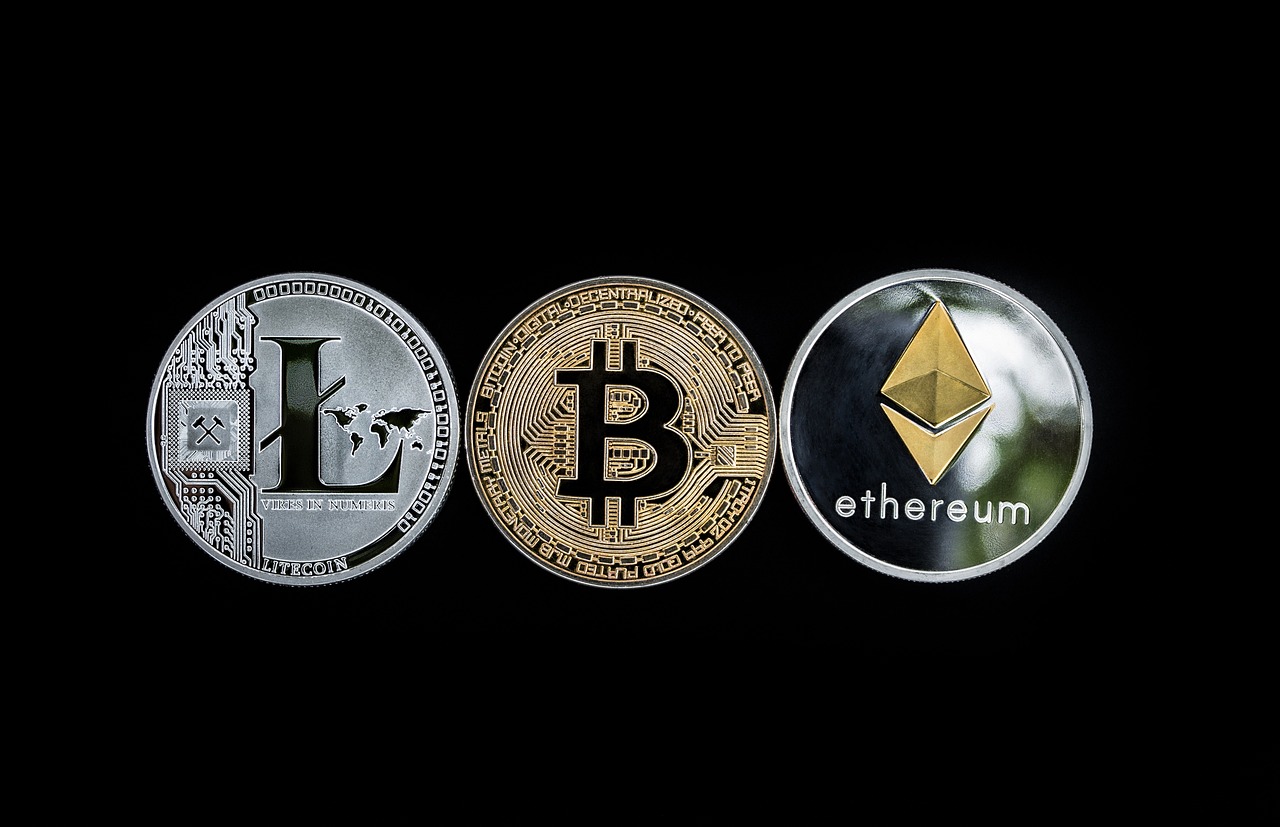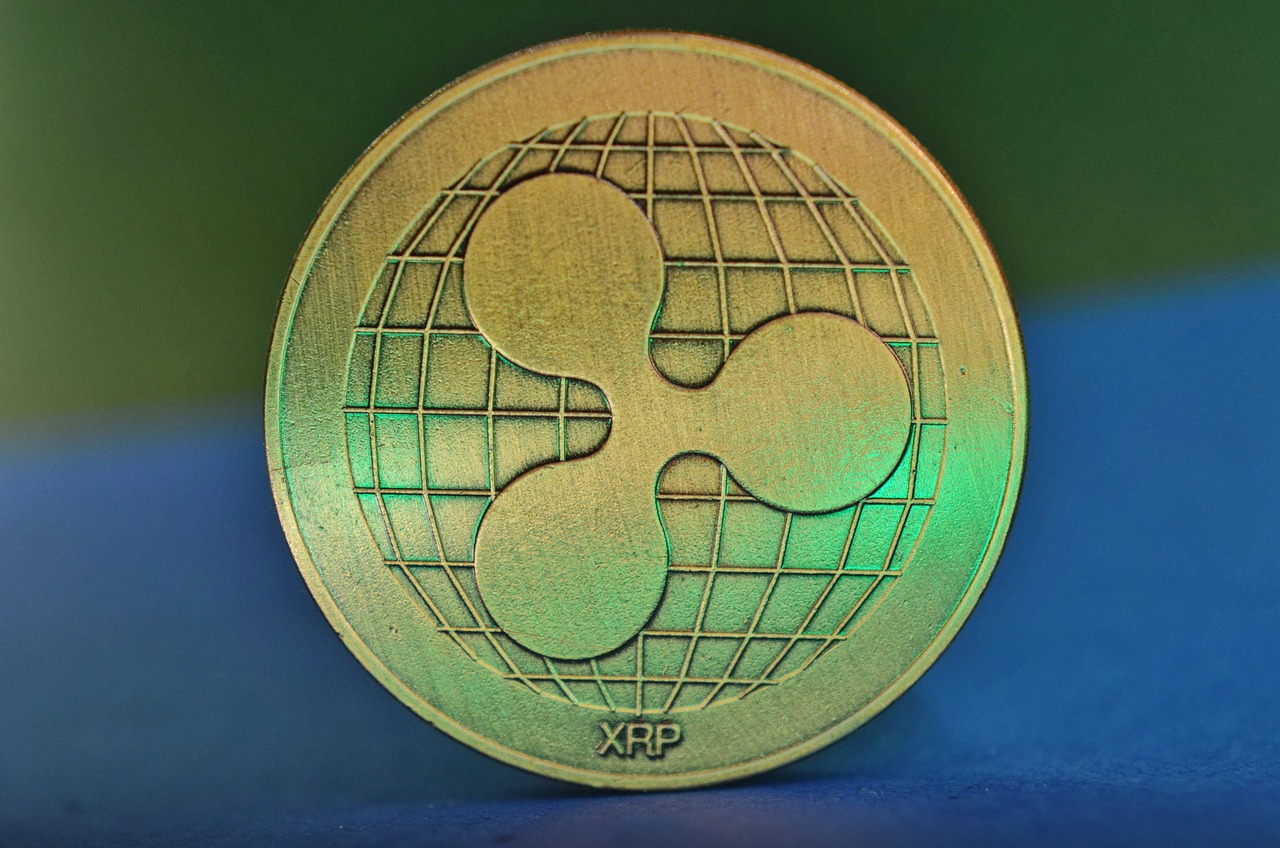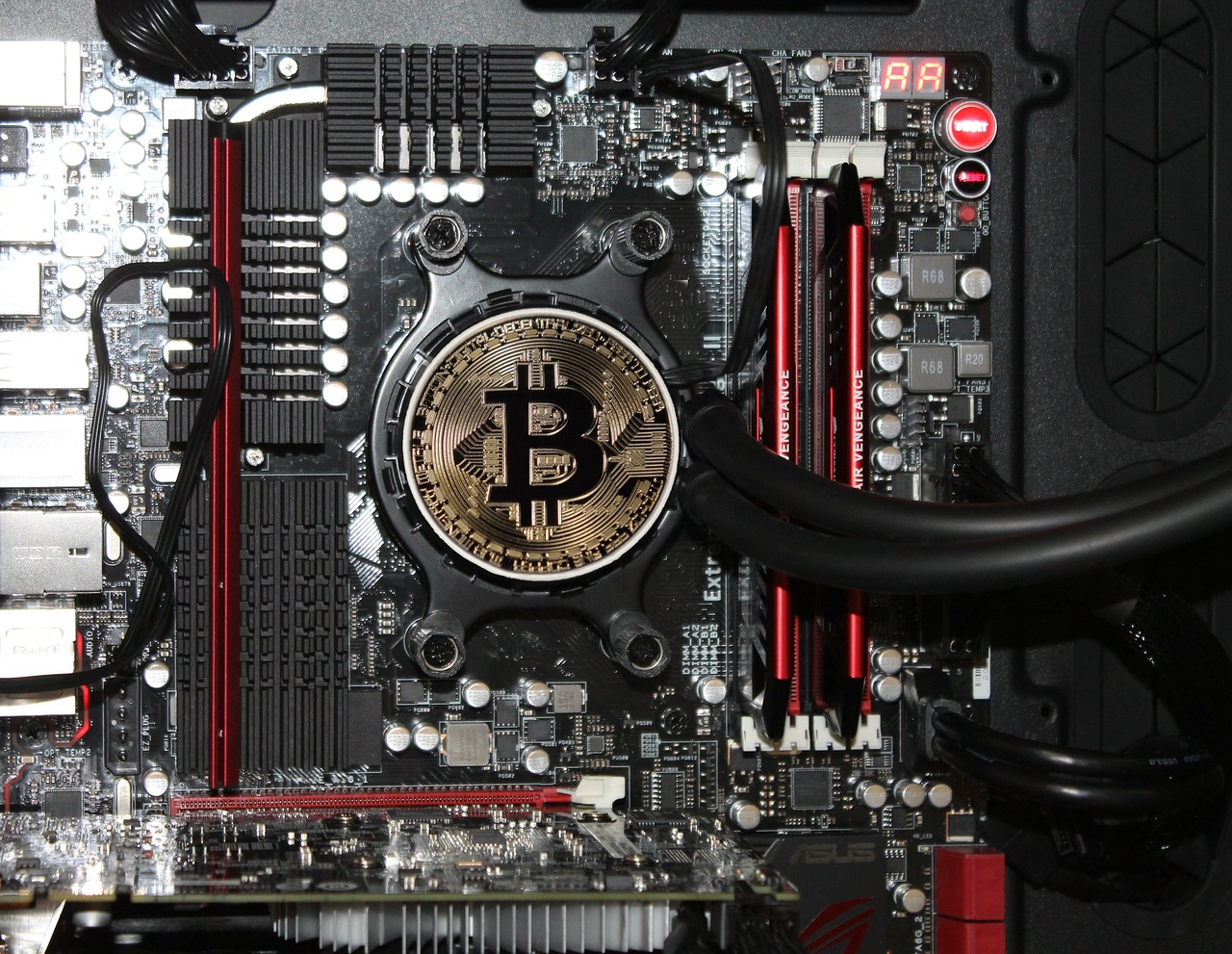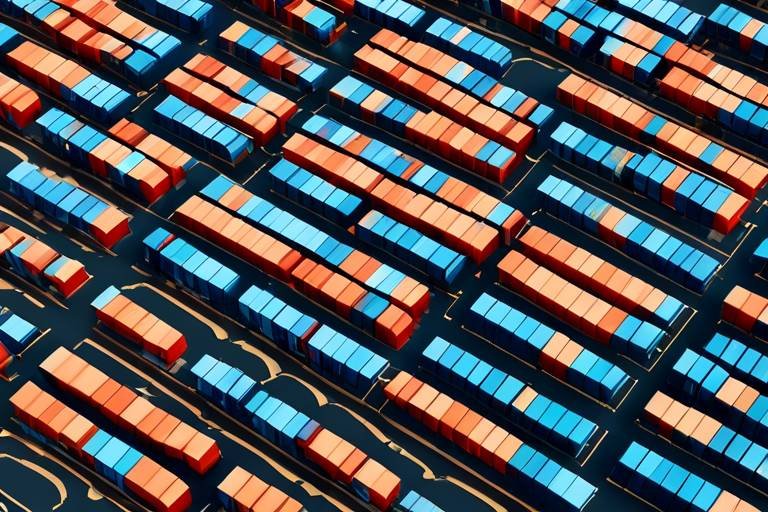The Role of Blockchain in Supply Chain Transparency
In today's fast-paced world, where consumers demand more information about the products they purchase, transparency in supply chains has become a crucial factor for businesses. Imagine a world where you can trace the journey of your favorite chocolate bar from the cocoa bean to the store shelf, ensuring every step is ethical and sustainable. This is where blockchain technology steps in, revolutionizing the way we think about supply chain management. By providing a decentralized and immutable ledger, blockchain enhances not only the visibility of products but also builds trust among stakeholders, from manufacturers to consumers. In this article, we will explore how blockchain enhances transparency, improves traceability, boosts efficiency, and ultimately fosters a culture of trust while reducing fraud and errors.
At its core, blockchain is a decentralized digital ledger that records transactions across multiple computers. Unlike traditional databases, which are controlled by a single entity, blockchain operates on a peer-to-peer network, making it nearly impossible to alter or tamper with the data. Each transaction is grouped into a block and linked to the previous one, forming a chain of blocks—hence the name "blockchain." This structure not only ensures data integrity but also provides a transparent view of the entire supply chain. For instance, when a product is manufactured, its details are recorded on the blockchain, and every subsequent transaction—be it shipping, storage, or sale—is added to this ledger. This means that anyone with access to the blockchain can trace the product's journey, creating an unparalleled level of transparency.
Transparency in supply chains fosters trust among consumers and businesses alike. It’s like having a window into the operations of a company, allowing stakeholders to see where products come from and how they are handled. The key advantages of increased visibility and accountability in supply chain operations include:
- Enhanced Traceability: Blockchain enables real-time tracking of products from origin to consumer.
- Consumer Confidence: When consumers can verify product origins, their confidence in brands increases.
- Regulatory Compliance: Blockchain simplifies compliance with regulations by providing a clear and immutable record of transactions.
Imagine being able to track a product in real-time, knowing every step it took before reaching your hands. Blockchain technology makes this possible, allowing for enhanced traceability. This means that if a product is recalled due to safety concerns, companies can quickly identify the affected batches and notify consumers. Furthermore, this traceability improves accountability among suppliers, as they are aware that their actions are being recorded on a transparent platform. This significantly reduces the risk of counterfeit goods entering the market, as every legitimate product can be traced back to its origin.
When consumers can verify product origins, their confidence in brands increases. In a world filled with misinformation, the ability to confirm that a product is ethically sourced or environmentally friendly is a game changer. Blockchain provides a level of assurance that traditional methods simply cannot match. For example, if a consumer buys organic coffee, they can trace its journey from the farm to their cup, ensuring it meets their ethical standards. This transparency not only builds trust but also encourages brands to maintain higher standards, knowing that consumers are watching.
Compliance with regulations can often be a daunting task for businesses, but blockchain technology can simplify this process. By providing a clear and immutable record of transactions, companies can easily demonstrate their adherence to legal requirements. Imagine a food manufacturer needing to prove that their products meet safety standards; with blockchain, they can provide a comprehensive history of their supply chain, making audits and inspections much smoother. This not only saves time but also reduces the likelihood of costly penalties.
Fraud and human error are two significant challenges in supply chain management. Blockchain's secure nature minimizes the chances of these issues arising. Since each transaction is recorded and cannot be altered retroactively, the risk of fraudulent activities is significantly reduced. For instance, in the diamond industry, blockchain can verify the authenticity of diamonds, ensuring that consumers are not inadvertently supporting conflict diamonds. This level of security benefits the overall integrity of the supply chain, leading to a more reliable market.
Despite its advantages, blockchain implementation faces challenges such as scalability and integration with existing systems. As transaction volumes grow, blockchain networks may face performance challenges. Additionally, integrating blockchain with existing supply chain systems can be complex, requiring careful planning and execution.
As transaction volumes grow, blockchain networks may face performance challenges. Current limitations in transaction speed and network capacity can hinder the effectiveness of blockchain in large-scale applications. However, ongoing research and development are focused on improving scalability, ensuring that blockchain can handle the demands of modern supply chains.
Integrating blockchain with existing supply chain systems can be complex. Many companies rely on legacy systems that may not easily accommodate new technology. However, with the right strategies and partnerships, seamless integration is achievable, allowing businesses to maximize efficiency and transparency across their operations.
Q: What is blockchain technology?
A: Blockchain is a decentralized digital ledger that records transactions across multiple computers, ensuring data integrity and transparency.
Q: How does blockchain enhance supply chain transparency?
A: By providing real-time tracking and an immutable record of transactions, blockchain allows stakeholders to trace products from origin to consumer.
Q: What are the benefits of transparency in supply chains?
A: Increased transparency fosters trust, enhances traceability, boosts consumer confidence, and simplifies regulatory compliance.
Q: What challenges does blockchain face in supply chain implementation?
A: Key challenges include scalability issues and the integration of blockchain with existing legacy systems.

Understanding Blockchain Technology
Blockchain technology might sound like a buzzword thrown around in tech circles, but it’s much more than that—it's a revolutionary concept that’s reshaping how we think about data and transactions. At its core, blockchain is a decentralized digital ledger that records transactions across multiple computers in such a way that the registered transactions cannot be altered retroactively. This decentralization means that no single entity has control over the entire chain, which inherently increases security and trust among users.
Imagine a public library where each book represents a transaction. When you take a book out, the library records that action on a visible ledger. Everyone can see who borrowed which book and when, but no one can change that record without it being noticed. This analogy captures the essence of how blockchain operates—transparency combined with immutability. Each transaction is grouped into a block, and once a block is filled, it is linked to the previous block, forming a chain. This structure not only enhances security but also provides a clear and chronological history of transactions.
Now, how does this apply specifically to supply chain management? In traditional supply chains, data is often siloed within different organizations, leading to inefficiencies and a lack of trust among stakeholders. However, when you implement blockchain, every participant in the supply chain can access the same information in real-time. This means that everyone from manufacturers to retailers to consumers can track the product's journey from origin to shelf. Real-time visibility allows for better decision-making and quicker responses to issues, ultimately leading to a more efficient supply chain.
To illustrate how blockchain enhances supply chain management, consider the following key principles:
- Decentralization: No single point of failure, reducing risks associated with data breaches.
- Transparency: All parties have access to the same information, fostering trust.
- Immutability: Once recorded, transactions cannot be changed, which combats fraud.
- Security: Advanced cryptography protects data integrity and privacy.
In conclusion, understanding blockchain technology is crucial for anyone involved in supply chain management. Its ability to provide a transparent, secure, and efficient framework for tracking products can transform how businesses operate. As we delve deeper into the benefits of transparency in supply chains, we’ll uncover just how critical blockchain is in building a more reliable and trustworthy ecosystem.

Benefits of Transparency in Supply Chains
Transparency in supply chains is not just a buzzword; it's a game-changer for businesses and consumers alike. Imagine walking into a grocery store and being able to trace the journey of your favorite organic apple from the orchard to your shopping cart. This level of visibility fosters trust and accountability, making it easier for consumers to make informed choices. When companies embrace transparency, they not only build credibility but also enhance their operational efficiency.
One of the most significant advantages of transparency is the ability to identify inefficiencies and bottlenecks within the supply chain. When all stakeholders have access to real-time data, they can spot issues before they escalate. This proactive approach can save companies both time and money, leading to a smoother operation overall. Moreover, businesses can respond quickly to market demands and consumer preferences, adapting their strategies in real-time.
Furthermore, transparency promotes ethical practices in sourcing and production. Consumers today are increasingly concerned about how their products are made and where they come from. With blockchain technology, businesses can provide verifiable information about their supply chains, ensuring that they meet ethical standards. This not only helps in building a loyal customer base but also aligns with the growing trend of corporate social responsibility.
Another key benefit of transparency is its role in enhancing collaboration among supply chain partners. When everyone is on the same page, it fosters a sense of teamwork that can lead to innovative solutions. For instance, suppliers, manufacturers, and retailers can work together to optimize logistics and reduce costs. This collaborative environment can create a ripple effect, positively impacting the entire supply chain ecosystem.
In addition to these operational advantages, transparency can significantly boost consumer confidence. When customers can verify the authenticity of products, they are more likely to trust the brands they purchase from. This is particularly important in industries plagued by counterfeit goods. By providing a transparent view of the supply chain, businesses can reassure consumers that they are buying genuine products, which ultimately leads to increased sales and brand loyalty.
Lastly, transparency is essential for regulatory compliance. In today's world, businesses must navigate a complex web of regulations governing their operations. Blockchain technology offers a clear and immutable record of transactions, making it easier for companies to demonstrate compliance with legal requirements. This not only reduces the risk of penalties but also streamlines audits and reporting processes.
In summary, the benefits of transparency in supply chains are manifold. From fostering trust and accountability to enhancing operational efficiency and consumer confidence, the advantages are clear. As we continue to advance into a more interconnected world, embracing transparency will be crucial for businesses aiming to thrive in competitive markets.
- What is supply chain transparency? Supply chain transparency refers to the visibility and accessibility of information regarding the production, processing, and distribution of goods.
- How does blockchain enhance supply chain transparency? Blockchain provides a secure and immutable ledger that allows all stakeholders to access real-time information about products and transactions.
- Why is transparency important for consumers? Transparency helps consumers make informed choices, ensuring they purchase products that meet their ethical and quality standards.
- What challenges do businesses face in achieving transparency? Businesses may encounter challenges such as integrating new technologies with existing systems and ensuring data accuracy across the supply chain.

Enhanced Traceability
One of the most remarkable benefits of blockchain technology is its ability to provide throughout the entire supply chain. Imagine being able to track a product from the moment it leaves the factory until it arrives at your doorstep. With blockchain, this isn't just a dream—it's a reality. Each transaction is recorded in a secure, immutable ledger, allowing stakeholders to access a complete history of a product's journey. This level of transparency not only fosters accountability but also significantly reduces the risk of counterfeit goods entering the market.
For instance, consider the food industry, where safety is paramount. When a food product is contaminated, the ability to trace its origin quickly can mean the difference between a minor recall and a widespread health crisis. Blockchain enables real-time tracking, allowing companies to pinpoint the source of contamination swiftly and effectively. This capability is invaluable not just for protecting consumers but also for safeguarding brand reputation. In an era where consumers are increasingly concerned about food safety, having a transparent supply chain can be a powerful marketing tool.
The implementation of blockchain in supply chains also allows for the creation of a digital passport for products. This digital passport contains all relevant information, including the product's origin, processing, and distribution history. Consumers can scan a QR code on the product packaging and instantly access its entire journey. This not only builds trust but also empowers consumers to make informed purchasing decisions. They can choose to support brands that prioritize transparency and ethical practices, effectively voting with their wallets.
Furthermore, the traceability offered by blockchain extends beyond just consumer goods. In industries such as pharmaceuticals, where counterfeit drugs pose a significant threat to public health, blockchain can be a game-changer. By ensuring that every transaction is recorded and verified, stakeholders can authenticate the legitimacy of products, thereby protecting patients and maintaining the integrity of the healthcare system.
In summary, enhanced traceability through blockchain technology is not merely a trend; it's a fundamental shift in how we approach supply chain management. The ability to track products in real-time, verify their authenticity, and provide consumers with transparent information is reshaping industries and fostering a new era of trust. As we move forward, embracing this technology will be crucial for businesses aiming to stay competitive and meet the evolving demands of consumers.

Consumer Confidence
is a critical component in the relationship between brands and their customers. In today's market, where information is abundant and easily accessible, consumers are more discerning than ever. They want to know where their products come from, how they are made, and whether they align with their values. This is where blockchain technology steps in as a powerful ally for brands seeking to build trust.
Imagine walking into a grocery store and picking up a bottle of olive oil. Wouldn't it be reassuring to know that you can trace its journey from the sun-kissed olive groves of Italy to your kitchen table? With blockchain, this level of transparency is not just a dream; it's a reality. Each transaction related to that bottle is recorded on a decentralized ledger, ensuring that every step of its journey is documented and can be verified by anyone.
When consumers can verify the origins of products, it significantly enhances their trust in the brand. They feel empowered knowing that the information is not just marketing fluff but a verifiable fact. This trust translates into loyalty; customers are more likely to return to brands that provide transparency. According to recent studies, brands that utilize blockchain to share product information experience a marked increase in customer retention and satisfaction.
Moreover, in an era where ethical consumption is on the rise, consumers are increasingly inclined to support brands that demonstrate a commitment to sustainability and ethical practices. Blockchain allows brands to showcase their compliance with ethical standards and environmental regulations. For instance, a company can prove that its products are sourced from fair-trade suppliers, thus appealing to the growing segment of socially conscious consumers.
In summary, consumer confidence is significantly bolstered by the transparency that blockchain provides. When customers can trace their products back to their origins and verify the claims made by brands, they are more likely to make informed purchasing decisions. This not only benefits consumers but also enhances the overall reputation of brands in a competitive marketplace.
- What is blockchain technology? Blockchain is a decentralized digital ledger that records transactions across multiple computers, ensuring transparency and security.
- How does blockchain improve consumer confidence? By providing verifiable information about product origins and manufacturing processes, blockchain enhances trust between consumers and brands.
- Can blockchain help with regulatory compliance? Yes, blockchain can simplify compliance by maintaining an immutable record of transactions, making it easier for companies to meet legal requirements.
- What are the challenges of implementing blockchain in supply chains? Key challenges include scalability issues and the integration of blockchain with existing legacy systems.

Regulatory Compliance
In today's fast-paced global economy, regulatory compliance is more crucial than ever. Companies face a labyrinth of rules and regulations that govern everything from product safety to environmental impact. Blockchain technology offers a revolutionary approach to tackling these compliance challenges. By providing a transparent and immutable record of transactions, blockchain simplifies the process of meeting legal requirements.
Imagine a world where every product's journey—from raw materials to finished goods—is recorded on a digital ledger that is accessible to all stakeholders. This is the promise of blockchain. With every transaction securely documented, companies can easily demonstrate their adherence to regulations. This not only saves time and resources but also enhances the credibility of the organization.
One of the standout features of blockchain is its ability to create a single source of truth. This means that all parties involved in the supply chain—from manufacturers to retailers—can access the same information. This transparency helps to ensure that everyone is on the same page regarding compliance standards. For example, if a product is subject to specific safety regulations, the blockchain can provide a complete history of compliance, including audits, certifications, and testing results.
Moreover, the immutable nature of blockchain records makes it nearly impossible to alter or delete information. This is particularly beneficial for regulatory audits. Instead of scrambling to gather documents and proof of compliance, companies can simply provide regulators with access to their blockchain. This not only speeds up the audit process but also minimizes the risk of penalties due to non-compliance.
However, it's important to note that while blockchain can significantly enhance regulatory compliance, its implementation is not without challenges. Companies must invest in the right technology and training to ensure that all stakeholders can effectively use the system. Additionally, they must navigate the complex landscape of regulations that can vary by industry and region.
In summary, blockchain technology stands as a beacon of hope for organizations striving to meet regulatory compliance. By offering a transparent, immutable, and easily accessible record of transactions, blockchain not only simplifies compliance but also builds trust among consumers and regulators alike. The future of regulatory compliance in supply chains looks promising, thanks to the capabilities that blockchain brings to the table.
- What is blockchain technology? Blockchain is a decentralized digital ledger that records transactions across multiple computers, ensuring transparency and security.
- How does blockchain enhance supply chain transparency? It provides real-time tracking of products and an immutable record of transactions, leading to increased accountability.
- Can blockchain help with regulatory compliance? Yes, it simplifies compliance by providing clear and accessible records that can be easily audited.
- What are the challenges of implementing blockchain? Challenges include scalability issues and the integration of blockchain with existing legacy systems.

Reducing Fraud and Errors
In today's fast-paced market, fraud and errors can wreak havoc on supply chains, leading to significant financial losses and damaging reputations. Fortunately, blockchain technology emerges as a powerful ally in the battle against these issues. By providing a secure and transparent framework for transactions, blockchain minimizes the risk of fraud and reduces human error, creating a more reliable supply chain environment.
Imagine a world where every transaction is recorded in a digital ledger that is nearly impossible to tamper with. This is the essence of blockchain. Each entry in the blockchain is linked to the previous one, forming a chain of trust that is visible to all authorized parties. This transparency means that every stakeholder, from suppliers to consumers, can verify the authenticity of products and transactions, significantly lowering the chances of fraudulent activities.
Moreover, the decentralized nature of blockchain means that no single entity has control over the entire chain. Instead, multiple parties hold copies of the same information, making it exceedingly difficult for anyone to manipulate data without detection. For instance, if a supplier attempts to alter shipment details, the discrepancy would be immediately visible to all other parties involved. This shared responsibility fosters a culture of accountability and vigilance, where everyone is invested in maintaining the integrity of the supply chain.
Another critical aspect is the reduction of human error. Traditional supply chain processes often rely on manual data entry, which is prone to mistakes. A simple typo can lead to significant consequences, such as incorrect shipments or inventory discrepancies. With blockchain, automated systems can handle data recording, thus minimizing human intervention and the potential for errors. This automation not only enhances accuracy but also streamlines operations, allowing businesses to operate more efficiently.
To illustrate the impact of blockchain on fraud and errors, consider the following table that compares traditional supply chain methods with blockchain-enhanced processes:
| Aspect | Traditional Supply Chain | Blockchain-Enhanced Supply Chain |
|---|---|---|
| Transaction Security | Vulnerable to fraud and tampering | Highly secure and immutable |
| Data Entry | Manual, prone to errors | Automated, significantly reduces errors |
| Accountability | Limited visibility among stakeholders | Full transparency, all parties can verify |
| Cost of Errors | High due to recalls and disputes | Lower due to improved accuracy |
In conclusion, the integration of blockchain technology into supply chains not only enhances security but also fosters a culture of trust and accountability. By significantly reducing fraud and human errors, businesses can operate with greater confidence, knowing that their products and transactions are secure. As more companies recognize these benefits, we can expect to see a broader adoption of blockchain, leading to a more robust and reliable supply chain ecosystem.

Challenges of Implementing Blockchain
While the potential of blockchain technology in enhancing supply chain transparency is undeniable, there are several challenges that organizations must navigate to implement it successfully. One of the primary hurdles is scalability. As the volume of transactions increases, blockchain networks can experience performance bottlenecks. Imagine a busy highway during rush hour; if too many cars are on the road, traffic slows down, and delays occur. Similarly, when more transactions are added to a blockchain, the system can struggle to process them efficiently. Developers are actively working on solutions like sharding and layer 2 scaling to mitigate these issues, but they remain a significant concern for many businesses.
Another major challenge is the integration with legacy systems. Many companies rely on established supply chain management software and processes that have been in place for years. Integrating blockchain into these existing systems is akin to trying to fit a square peg into a round hole; it can be complex and sometimes frustrating. Organizations must invest time and resources into ensuring that blockchain solutions can communicate effectively with their current infrastructure. This often requires not just technical adjustments but also a shift in organizational mindset to embrace new technologies.
Moreover, there is a lack of standardization within the blockchain space. Different platforms and protocols can lead to fragmentation, making it difficult for companies to choose the right solution. Without a common framework, businesses may find themselves locked into a specific technology that could become obsolete or incompatible with future advancements. This uncertainty can stifle innovation and slow down the adoption of blockchain solutions across the supply chain.
Another aspect to consider is the regulatory landscape. As blockchain technology evolves, so too do the laws and regulations surrounding it. Companies must stay abreast of legal requirements to ensure compliance, which can be particularly challenging in industries that are heavily regulated. Navigating this ever-changing regulatory environment is crucial, as non-compliance can lead to hefty fines and reputational damage.
Finally, there is the issue of education and awareness. Many stakeholders in the supply chain may not fully understand how blockchain works or its benefits. This lack of knowledge can lead to resistance to change, as employees and partners may be hesitant to adopt new technologies without a clear understanding of their advantages. To overcome this barrier, organizations must invest in training and education programs that demystify blockchain and illustrate its potential to enhance transparency and efficiency.
In summary, while blockchain presents an exciting opportunity for improving supply chain transparency, organizations must address several challenges, including scalability, integration with legacy systems, standardization, regulatory compliance, and education. By tackling these issues head-on, businesses can harness the full potential of blockchain technology and pave the way for a more transparent and efficient supply chain.
- What is blockchain technology?
Blockchain is a decentralized digital ledger that records transactions across multiple computers, ensuring that the data is secure and cannot be altered retroactively.
- How does blockchain enhance supply chain transparency?
By providing a real-time, immutable record of transactions, blockchain allows stakeholders to trace products from their origin to the end consumer, thereby increasing accountability and reducing the risk of fraud.
- What are the main challenges of implementing blockchain?
The main challenges include scalability, integration with existing systems, lack of standardization, regulatory compliance, and the need for education and awareness among stakeholders.

Scalability Issues
When we talk about in the context of blockchain technology, we’re diving into one of the most pressing challenges that this revolutionary system faces today. Imagine a bustling highway during rush hour; the more cars that enter, the slower traffic moves. Similarly, as transaction volumes increase on a blockchain network, performance can take a hit. The very essence of blockchain—its decentralized and distributed nature—can lead to bottlenecks when too many transactions are processed simultaneously. This can result in longer confirmation times and increased transaction fees, which can deter users from adopting the technology.
Current blockchain networks, such as Bitcoin and Ethereum, have demonstrated these scalability challenges firsthand. For instance, Bitcoin can handle roughly 7 transactions per second (TPS), while Ethereum manages about 30 TPS. In contrast, traditional payment systems like Visa can process over 24,000 TPS. This stark difference highlights the urgent need for improvements in blockchain scalability to keep pace with growing demand.
To combat these scalability issues, various solutions are being explored and implemented. Some of the most promising approaches include:
- Layer 2 Solutions: These are protocols built on top of existing blockchains, designed to handle transactions off the main chain. Examples include the Lightning Network for Bitcoin and Plasma for Ethereum.
- Sharding: This method involves breaking the blockchain into smaller, more manageable pieces, or shards, allowing multiple transactions to be processed simultaneously.
- Consensus Mechanism Improvements: Transitioning from energy-intensive proof-of-work (PoW) systems to more efficient mechanisms like proof-of-stake (PoS) can increase transaction throughput.
While these solutions are promising, they also come with their own set of challenges. For instance, implementing layer 2 solutions requires additional infrastructure and may introduce new security vulnerabilities. Sharding, on the other hand, complicates the overall architecture of a blockchain, potentially leading to issues with data consistency and security. As the technology continues to evolve, finding the right balance between scalability, security, and decentralization will be crucial for the future of blockchain in supply chain management.
In conclusion, scalability issues remain a significant hurdle for blockchain technology. However, with ongoing research and development, the potential for overcoming these challenges is promising. The journey towards scalable blockchain solutions is akin to navigating a winding road; it may be bumpy, but the destination holds incredible potential for transforming supply chains and enhancing transparency.
- What is blockchain scalability?
Scalability refers to a blockchain's ability to handle an increasing number of transactions efficiently without compromising performance. - Why is scalability important in supply chains?
Scalability ensures that blockchain technology can accommodate growing transaction volumes, which is crucial for maintaining efficiency and responsiveness in supply chains. - What are some solutions to scalability issues?
Solutions include layer 2 protocols, sharding, and improvements in consensus mechanisms. - Are there any risks associated with scalability solutions?
Yes, each solution may introduce new security vulnerabilities or complicate the blockchain's architecture.

Integration with Legacy Systems
Integrating blockchain technology with existing legacy systems can be a daunting task for many organizations. Imagine trying to fit a modern, high-tech device into an old, outdated socket; it just doesn't work seamlessly. This challenge arises primarily because legacy systems were not designed with the flexibility and interoperability that blockchain requires. However, with the right strategies, businesses can overcome these hurdles and enjoy the benefits of blockchain.
One of the first steps in this integration process is to assess the current infrastructure. Understanding how existing systems operate is crucial. Organizations need to identify which components of their legacy systems are essential and which can be modified or replaced. This assessment can be likened to taking inventory before a big move; knowing what you have helps in planning what you need to take with you.
Another key factor in successful integration is the development of a robust middleware solution. Middleware acts as a bridge between the old and new systems, allowing them to communicate effectively. Think of middleware as a translator in a conversation between two people who speak different languages. It ensures that data flows smoothly between the blockchain and legacy systems, minimizing disruptions in operations.
Moreover, organizations should consider a phased implementation approach. Instead of a full-scale rollout, gradually integrating blockchain into specific areas of the supply chain can help mitigate risks. For instance, starting with a pilot project allows companies to test the waters and make adjustments without jeopardizing their entire operation. This method is akin to dipping your toe into the water before diving in; it provides a clearer understanding of what to expect.
Additionally, training employees on the new technology is vital. Employees must understand how blockchain works and how to use it effectively alongside legacy systems. This training can help alleviate fears and resistance to change, fostering a culture of innovation within the organization. After all, a well-informed team is more likely to embrace new tools and processes.
In conclusion, while the integration of blockchain with legacy systems presents challenges, it is not insurmountable. By conducting thorough assessments, employing middleware, adopting phased implementations, and investing in employee training, organizations can successfully navigate this complex landscape. The reward for overcoming these obstacles is a more efficient, transparent, and trustworthy supply chain that can ultimately lead to greater customer satisfaction and business success.
- What are legacy systems? Legacy systems are outdated computing systems or applications that are still in use, often because they perform essential functions for the organization.
- Why is integrating blockchain with legacy systems important? Integration allows organizations to leverage the benefits of blockchain, such as improved transparency and traceability, while still utilizing their existing systems.
- What is middleware? Middleware is software that acts as a bridge between different applications or systems, enabling them to communicate and share data effectively.
- How can organizations ensure a smooth integration process? By conducting thorough assessments, employing middleware solutions, implementing changes gradually, and training employees, organizations can facilitate a smoother integration.
Frequently Asked Questions
-
What is blockchain technology?
Blockchain technology is a decentralized digital ledger that records transactions across multiple computers. This means that every transaction is securely documented and can be verified by all parties involved, ensuring transparency and trust within the system.
-
How does blockchain improve supply chain transparency?
Blockchain enhances supply chain transparency by providing a real-time, immutable record of transactions. This allows all stakeholders to track products from their origin to the consumer, reducing fraud and increasing accountability.
-
What are the key benefits of increased transparency in supply chains?
Increased transparency fosters trust among consumers and businesses, enhances traceability of products, boosts consumer confidence, and simplifies regulatory compliance. It ultimately leads to a more efficient and reliable supply chain.
-
Can blockchain help in reducing fraud?
Absolutely! The secure nature of blockchain minimizes the chances of fraud and human error. By providing a transparent and tamper-proof record, it helps ensure that the information regarding products is accurate and trustworthy.
-
What are the challenges of implementing blockchain in supply chains?
Some challenges include scalability issues, where transaction volumes can overwhelm the network, and the complexity of integrating blockchain with existing legacy systems. Overcoming these obstacles requires careful planning and innovative solutions.
-
How does blockchain enhance consumer confidence?
When consumers can verify the origins of products through a transparent blockchain system, their trust in brands increases significantly. This confidence is crucial in today’s market, where consumers are more aware and concerned about product authenticity.
-
Is blockchain technology compliant with regulations?
Yes, blockchain can aid in regulatory compliance by providing a clear and immutable record of all transactions. This visibility helps businesses meet legal requirements more efficiently, reducing the risk of non-compliance.



















